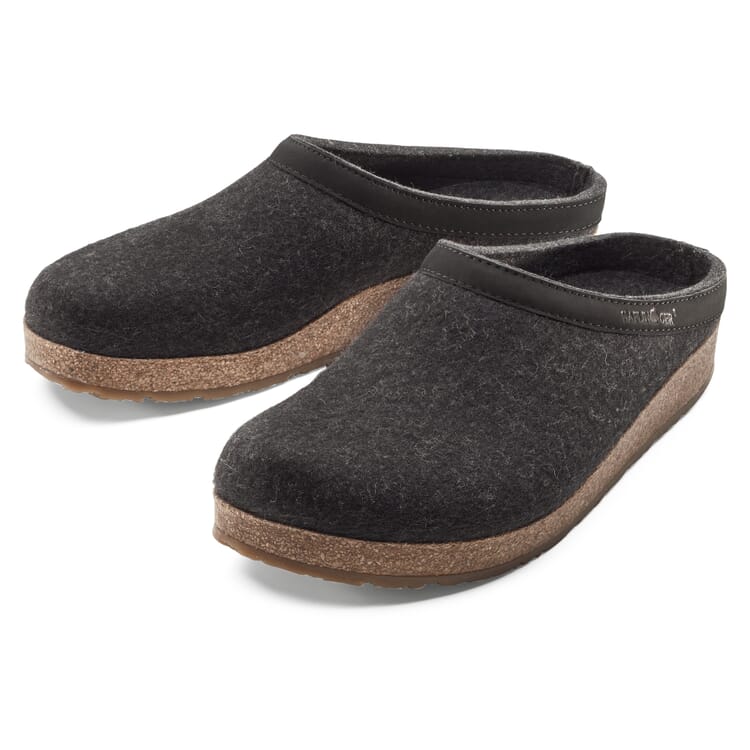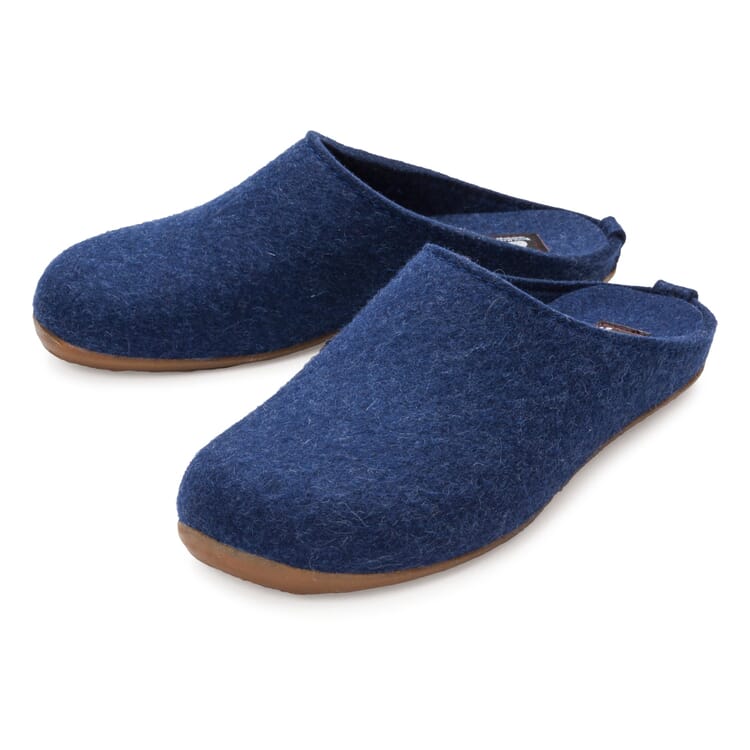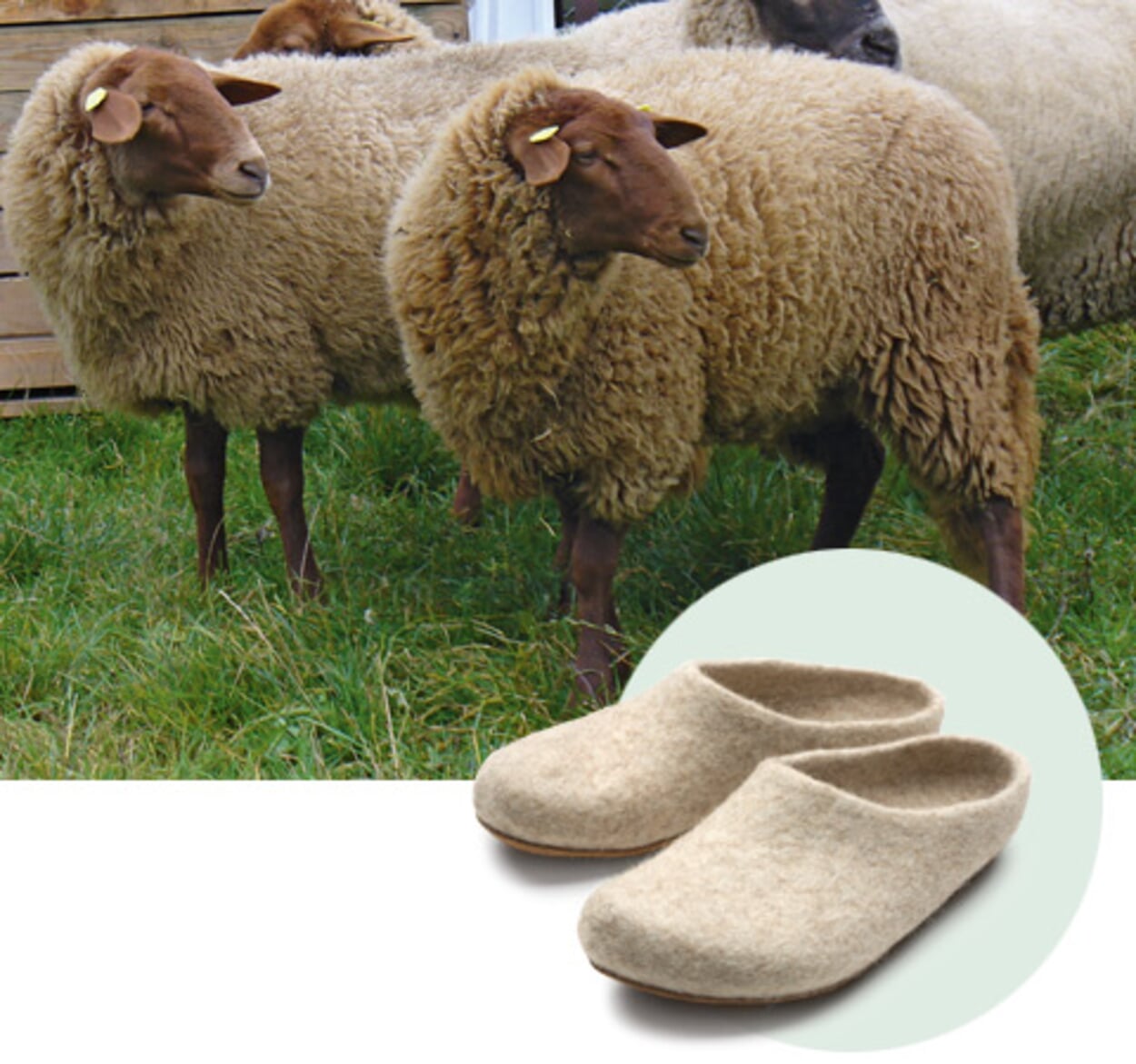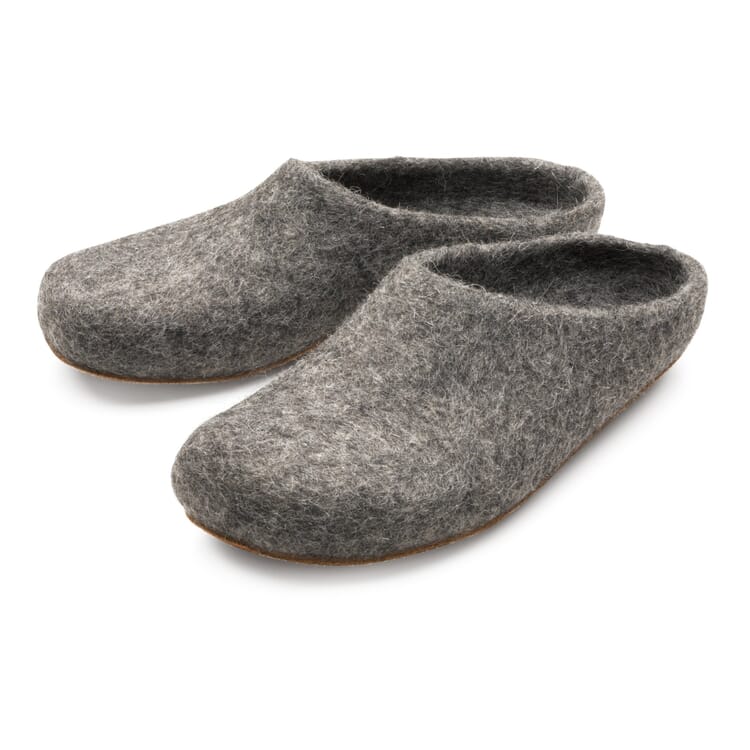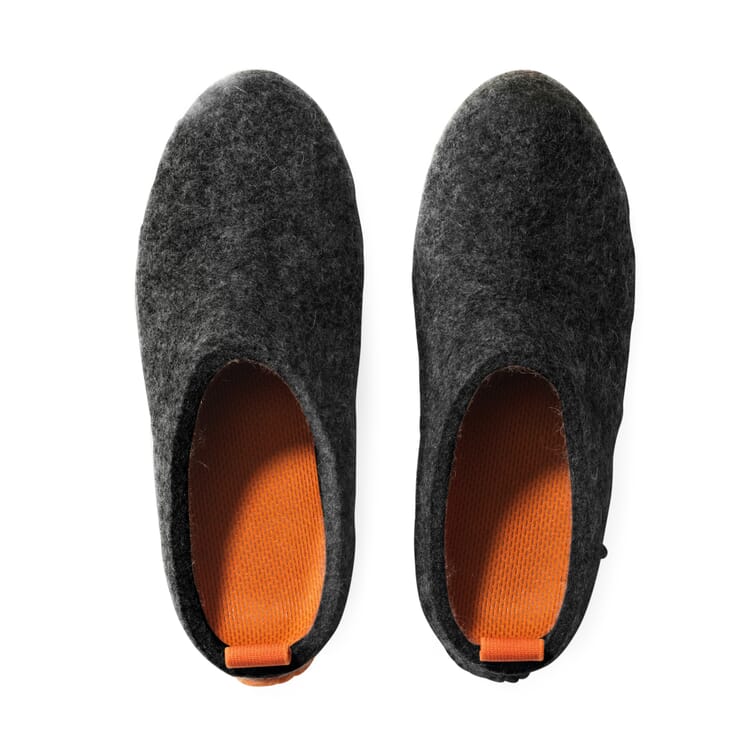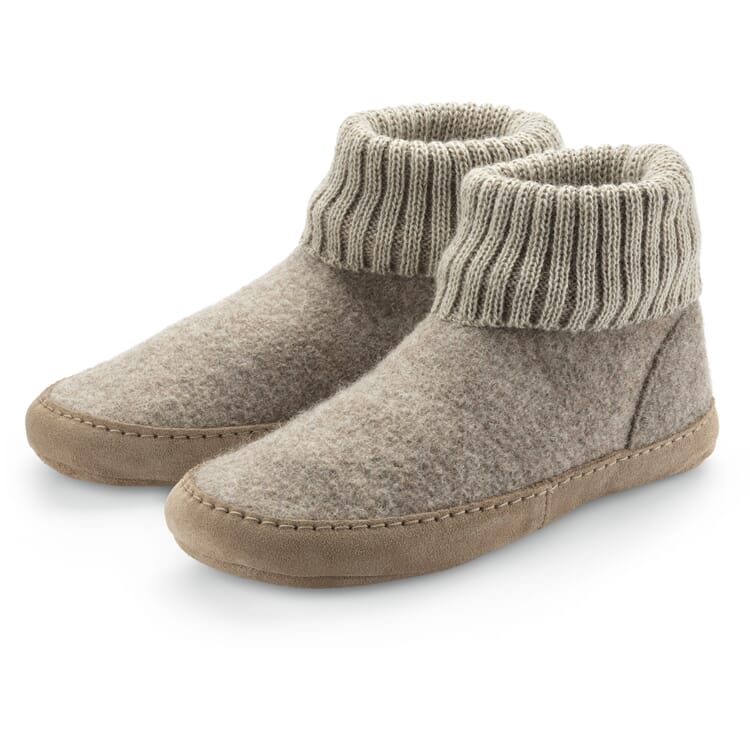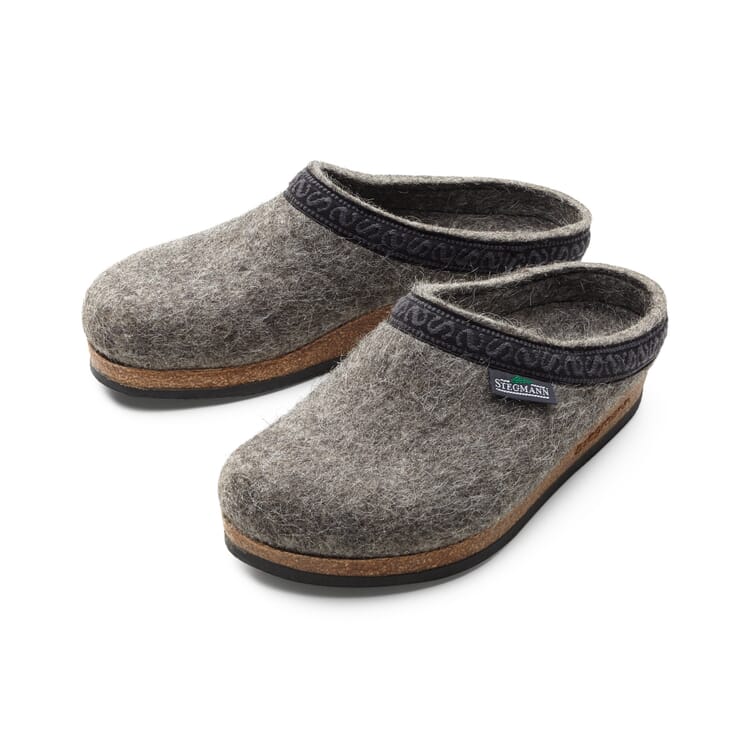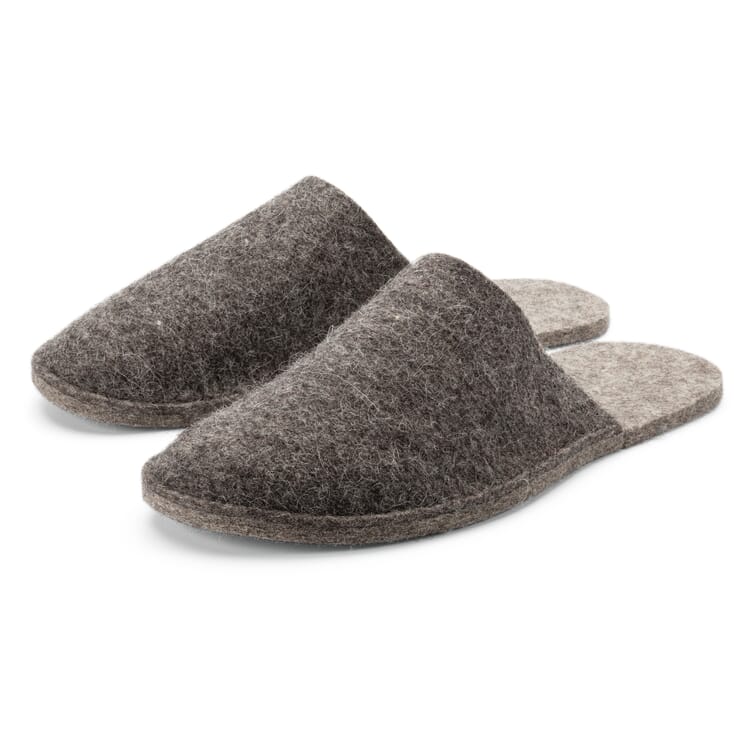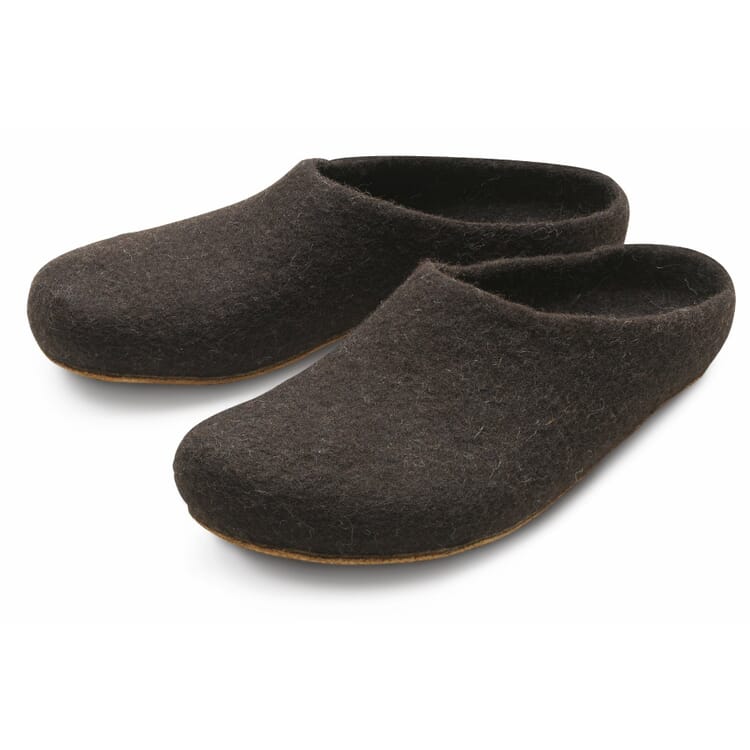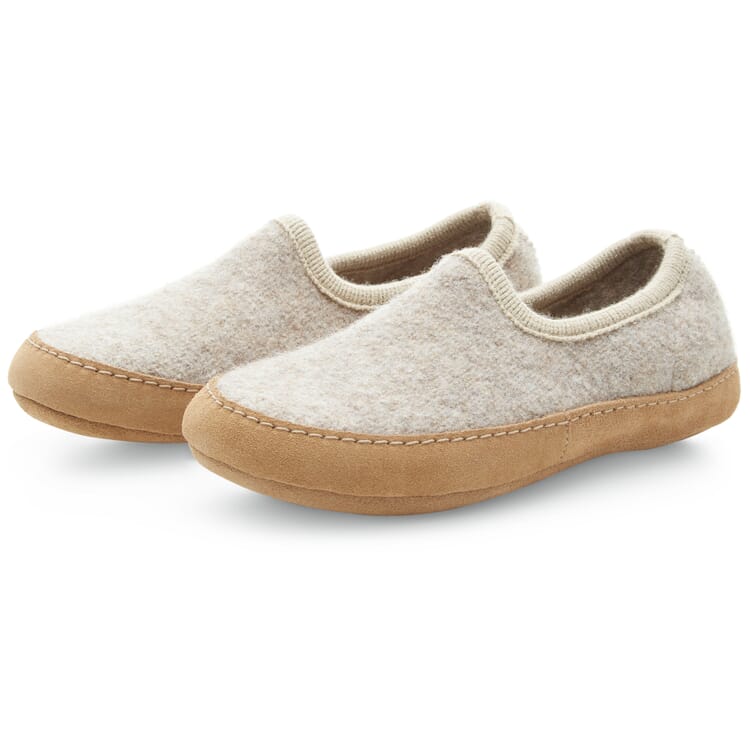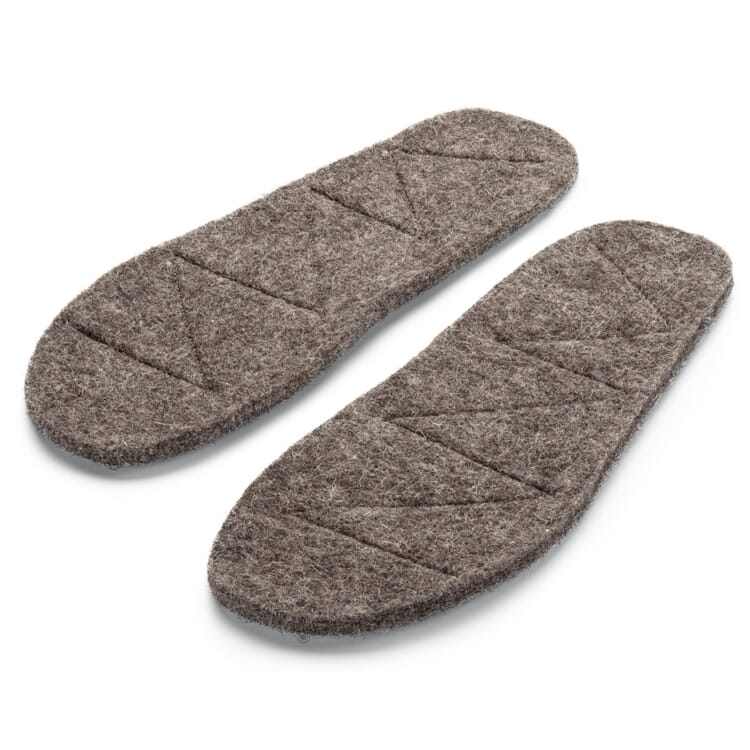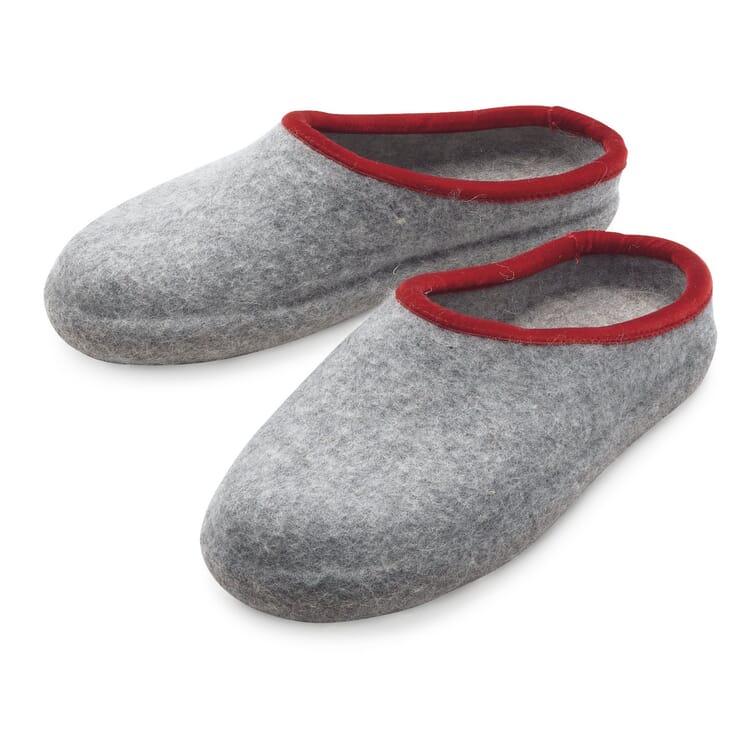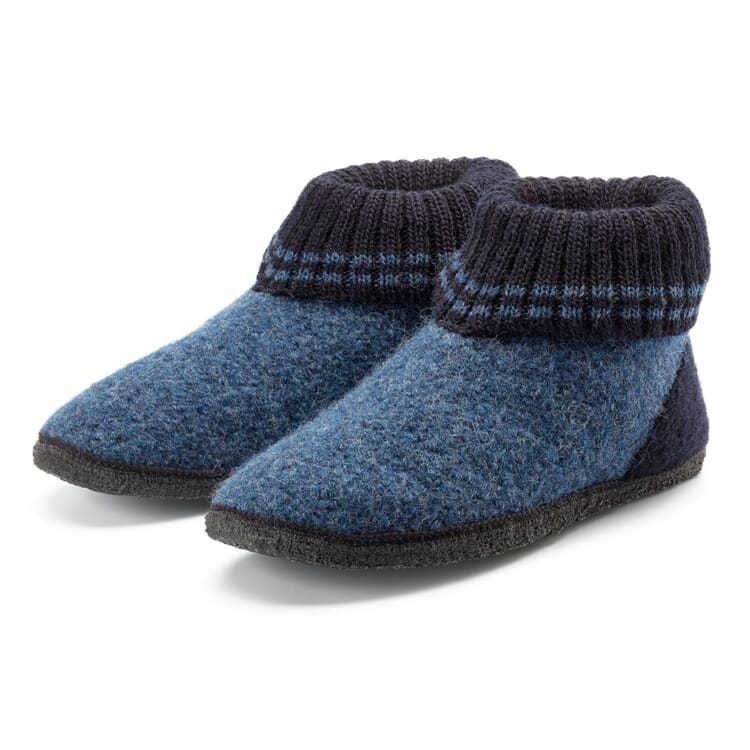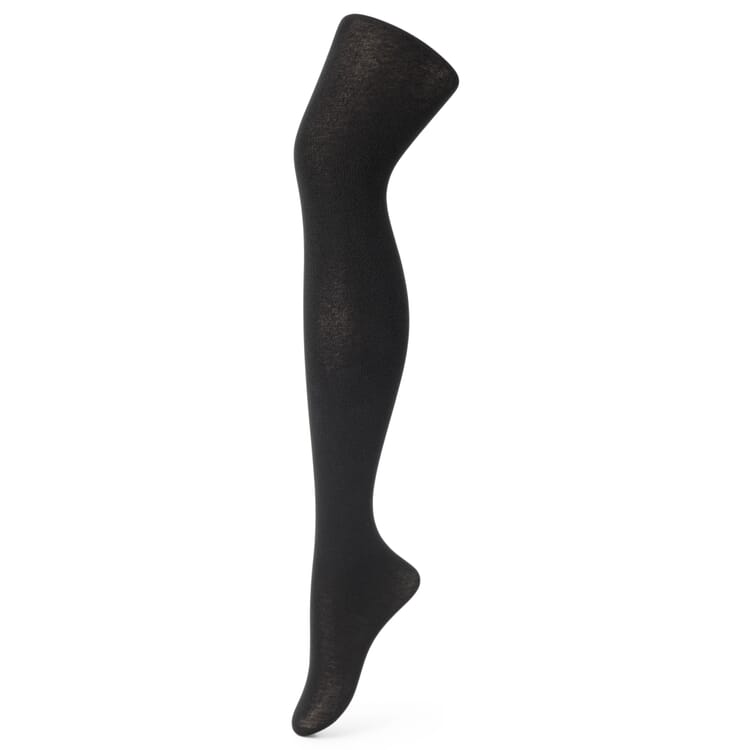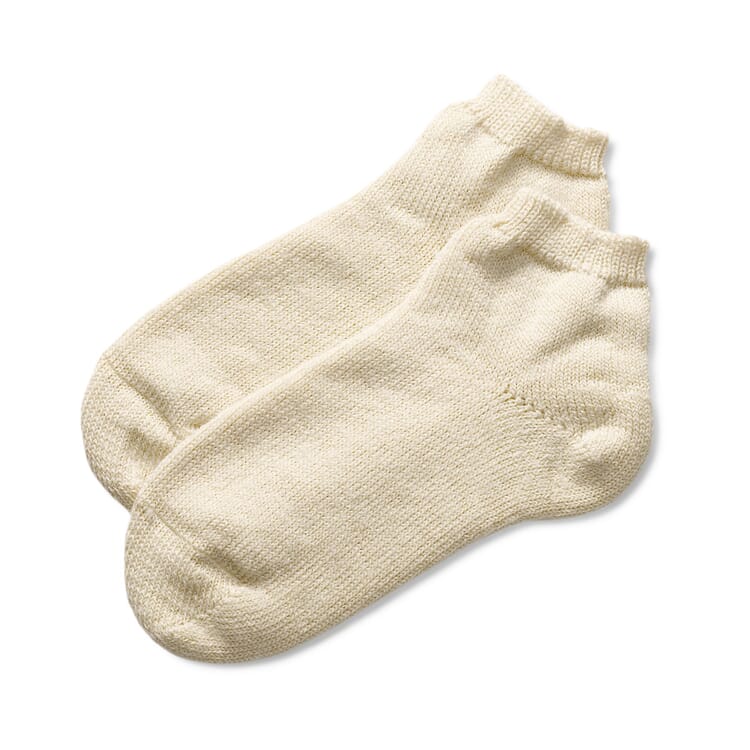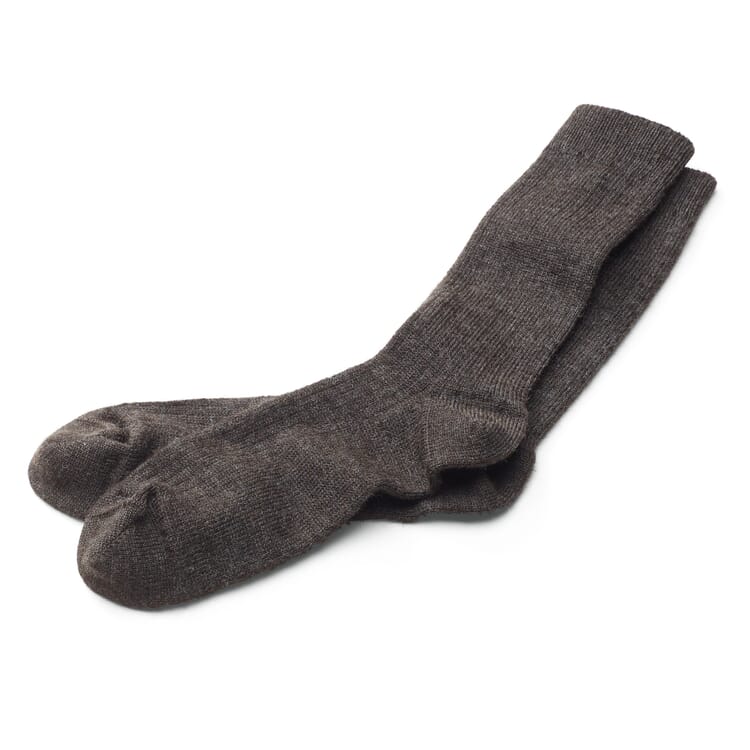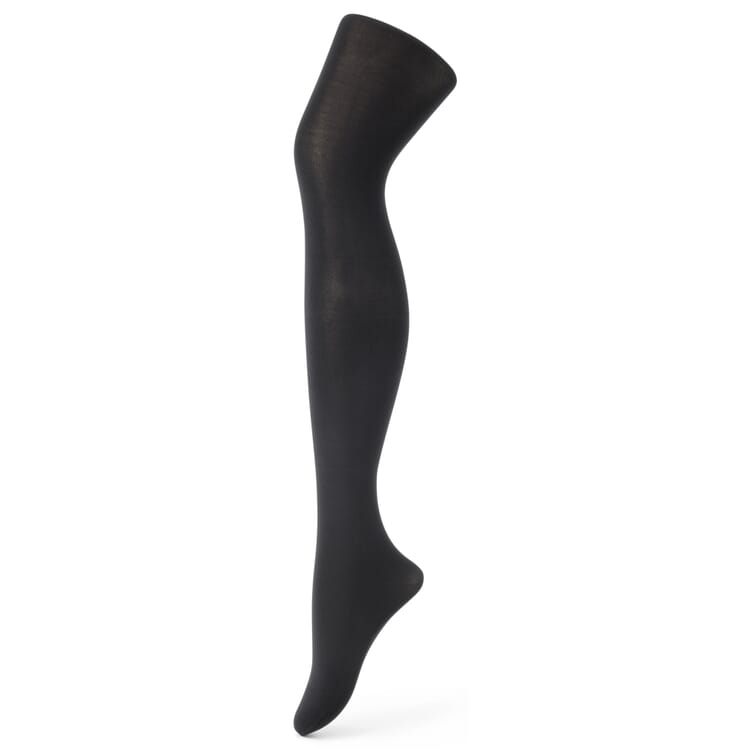Felt slippers. Warm in winter, cool in summer
The rolling of wool into felt preceded spinning and weaving as a simpler technique (and is at least 7000 years old as a manufacturing technique). Real felt is rare; fake felt - apart from that from party politics, administration and associations - is plentiful: a waste product from polyacrylic fleeces and other cheap synthetic materials. Genuine fulling felts consist only of cattle hair and sheep's wool, genuine wool felts only of pure wool. Externally, felt and felt substitutes are almost indistinguishable; they reveal themselves only in the fire test (real felt does not burn, but only stews briefly) and then in use. Real felt slippers climatize the foot. It does not sweat and burn, and does not cool down on cold floors - felt is the ideal slipper material.
Haflinger slippers. Molded on the last
The Haflinger slippers are made of pure wool felt; an anatomically shaped cork-latex footbed provides good support. The sole of the slippers is removable and can be replaced with your own insoles.
Gottstein slippers at Manufactum
The Gottstein slippers are round-felted for us from the wool of old sheep breeds; without disturbing seams and with a thin outsole made of suede.
The Coburg chestnut sheep descends from a hardy old breed of country sheep that was found mainly in the low mountain ranges. Today, there are only a few thousand animals left, and their dense wool is used mainly for carpet production. In the course of a sheep's life, the colors of the wool change from bright golden yellow or redbraun to lighter tones, although the wool retains its slightly reddish sheen: It is also referred to as "golden fleece". In our felt slippers, this natural hue is not masked by dyeing or bleaching.
The wool comes from the Swiss Jura sheep, a hardy, strong breed that is very suitable for keeping on high alpine pastures. The fine, braune to black wool has almost merino character. Gottstein processes it into wool felt by squeezing and beating the pure wool fleece, soaked without chemicals in mountain spring water, in a historic hammer mill until it is strongly compacted.
It is one of the oldest sheep breeds known to us at all. The frugal animal is considered particularly down-to-earth and suitable for mountainous areas. The wool fleece of the stone sheep is very dense and firm, the fibers are very durable and quite "bristly" to the touch. With their dense fur, the sheep can withstand even heavy precipitation. The wool provides a good heat balance. For the felt slippers, it is processed in its natural state, i.e. undyed and unbleached, and accordingly feels "bristly".
Wool felt is very easy to care for, as wool cleans itself in the air. Should the felt nevertheless become heavily soiled, it can be easily cleaned again by brushing with soapy water.



